Polymer Films back
back
If the thickness of nanostructured block copolymer film is smaller than the period of the nanostructures in the bulk, we deal with the so-called ultrathin films
Ultrathin films of diblock copolymers
We have developed for the first time a theory of ultrathin films to explain behavior of PS-P2,4VP diblock copolymers adsorbed on mica from nonselective dilute solution [1-5]. It turns out that P2,4VP blocks strongly adsorb on the mica forming a monomer-thick layer and PS blocks aggregate with each other. The developed theory quantitatively explained dependence of the nanostructure morphology on composition of the copolymer [1].
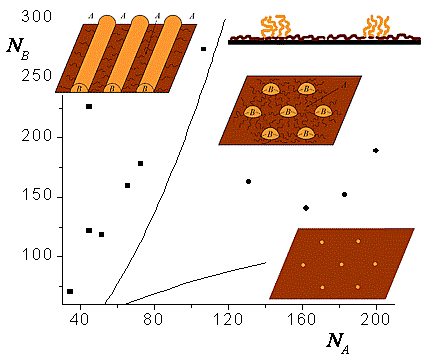
Ultrathin films of mixture of AB and AC diblock copolymers
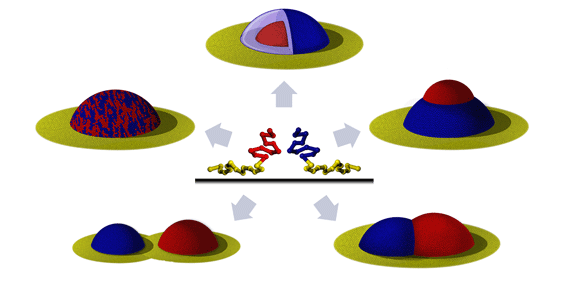
We developed a theory of surface micelles obtained by the selective adsorption of AB and AC diblock copolymers on a plane surface. Corona-forming A blocks are strongly adsorbed on the surface and consist of a monomer thick layer (2D blocks). The B and C blocks aggregate, forming a three-dimensional core of the micelles. We predict the stability of different kinds of micelles including homogeneously mixed B and C blocks in the core; a double compartment core (structures like boiled egg, fried egg and Janus) and pure AB and AC micelles. The kind of micelle depends on the interactions of the blocks with the environment (substrate and air) and each other, on the fraction of AB and AC macromolecules and the composition of the copolymers. Diagrams of the states of the micelles are constructed [6].
Related articles
If one of the ends of block copolymers physically or chemically attached to the surface, we deal with the so-called PLANAr brushes
Planar brushes of diblock copolymers
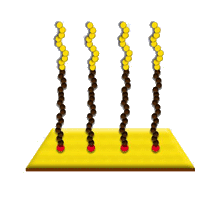
It is well known that polymer chains are strongly stretched in densely grafted polymer brushes: the end-to-end distance is proportional to the contour length. If the brush consists of diblock copolymers with incompatible blocks, one can expect that the structure of the brush should be a double layer. However, we have demonstrated that the increase of the grafting density leads to an instability of the double layer and formation of perpendicular nanodomains of various morphologies [1].

Possible structures in densely grafted diblock copolymer brushes: a) “golf holes”, b) “gullies” and “ridges”, c) and d) “stalactites”.
Planar brushes of gradient copolymers
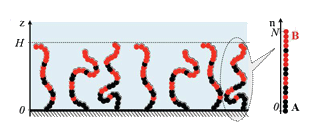
We have developed [2] a mean-field theory of densely grafted gradient copolymer brushes swollen in a selective solvent. Interactions between monomer units are taken into account within the Flory-Huggins approach with the interaction parameter variable along the chain. The theory predicts strong stretching of the chains, non-monotonous polymer density profile and dependence of the brush thickness on composition of the copolymer.
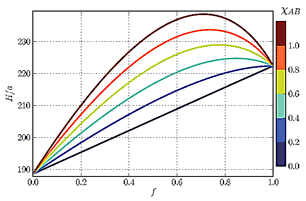
Dependence of the brush thickness on composition of the copolymer.
Related articles
"Perpendicular domain orientation in dense planar diblock copolimer brushes", Macromolecules 2012, 45 (11), pp 4870–4875
If the thickness of nanostructured block copolymer film is several period of the nanostructures in the bulk, we call them thin films
Orientations of domains in diblock copolymer films
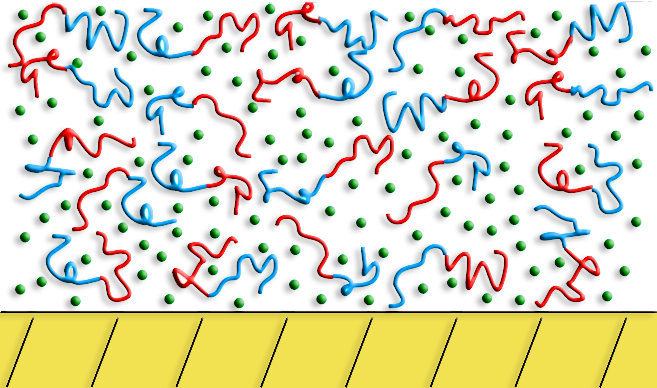
One of the common ways to prepare a polymer film is a spin-coating. The spreading of the droplet of the polymer solution on the substrate under the force of inertia is accompanied by evaporation of the solvent. As a result, a dry film with a free surface is formed (the film is confined by a solid only from one side). In the case of diblock copolymers, nanodomain structure can be formed within the films. For many technologies (magnetic storage, optoelectronics, membranes, etc.) it is very important to control orientation of the domains with respect to the film surfaces. To understand physical reasons for stability of different domains orientations in free surface films, we have developed a theory which explained effects of interaction with the substrate [1] and molecular weight [2] on the orientations.
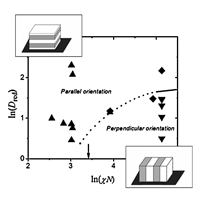
Dependence of lamellar orientation on the films thickness and molecular weight. Comparison of the theory with experimental data
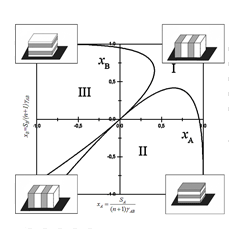
Dependence of lamellar orientation on the films thickness (n), the spreading parameters (SA and SB) and the surface tension coefficient (AB): perpendicular (I) and parallel (II and III) orientations.
Morphology-controlled kinetics of solvent uptake by block copolymer films
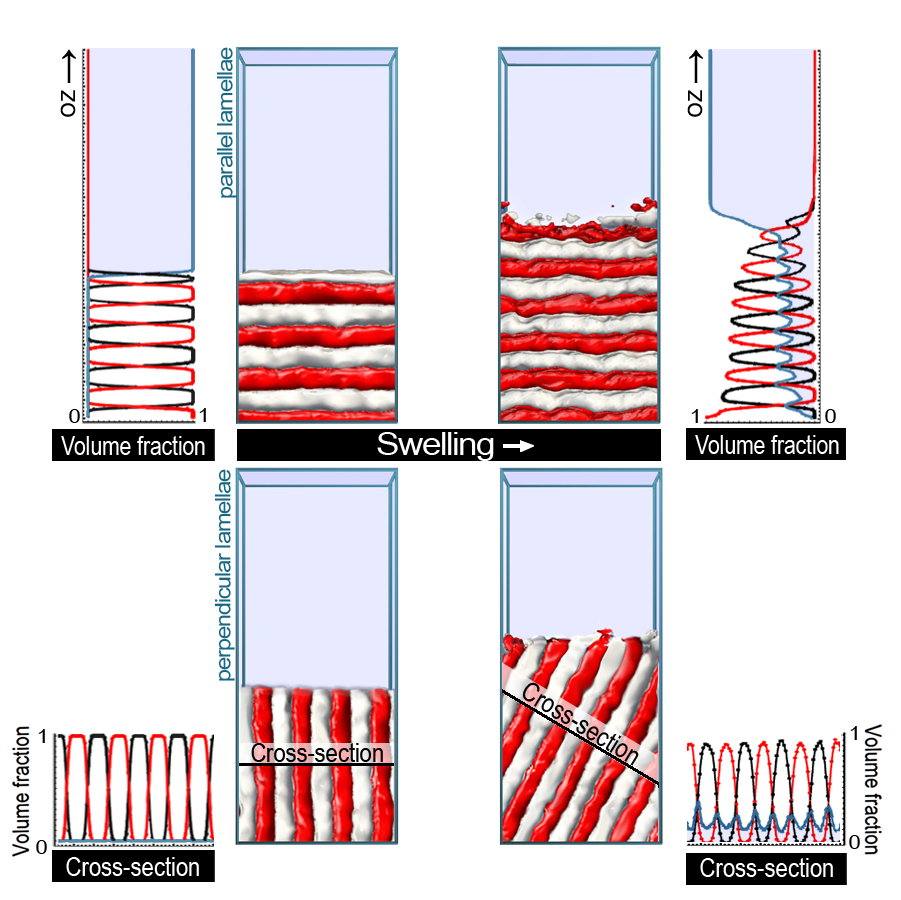
Using dissipative particle dynamics simulations, we study the swelling of diblock copolymer films in a nonselective solvent. Films with micellar morphology [3], horizontally and vertically oriented lamellae [4] has been investigated. Our results confirm the inhomogeneous distribution of the solvent inside the film, with the higher fraction of the solvent localized at the AB interface and reveal morphology-dependent kinetics of the solvent uptake. The effect of dissimilar abilities of the nanodomains and of AB interface to serve as diffusion pathways for small molecules may find potential in designing nanosensors and heterogeneous barrier layers.